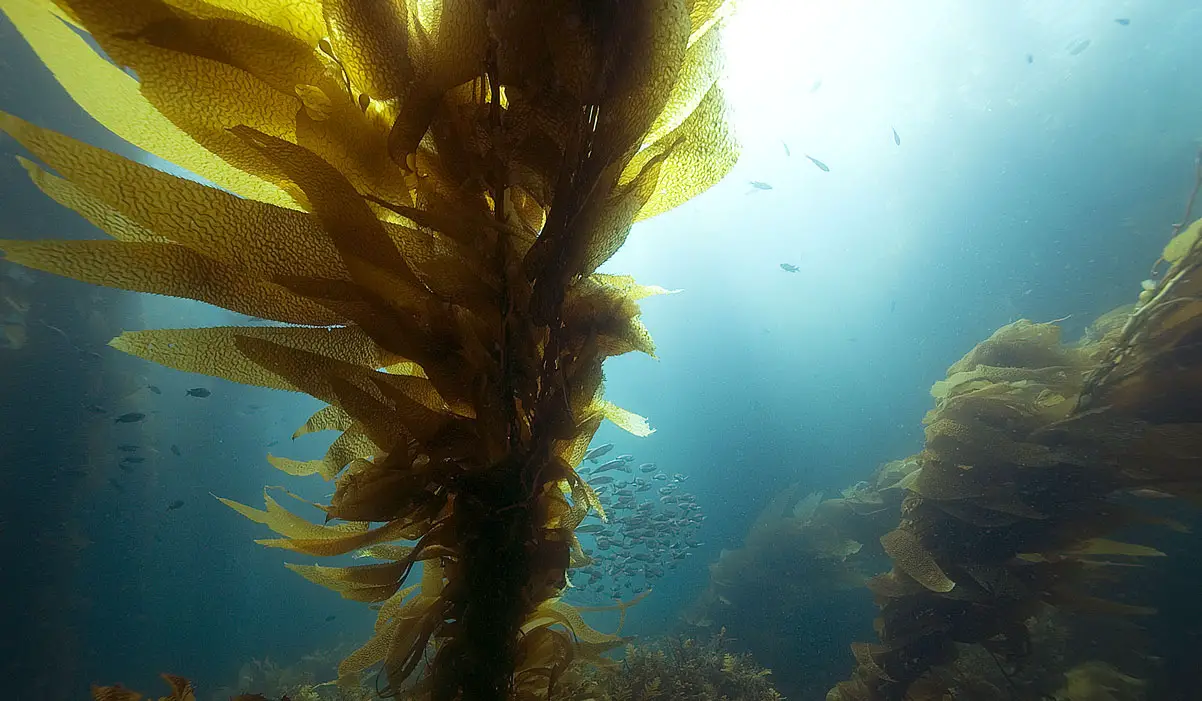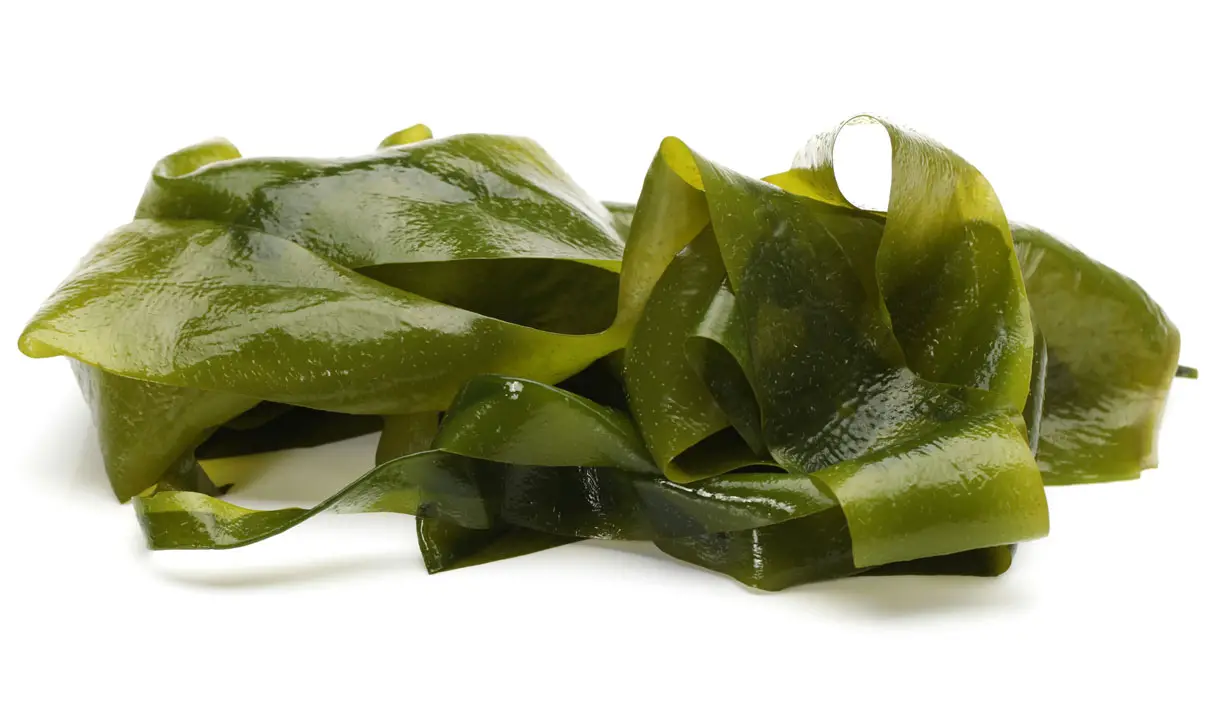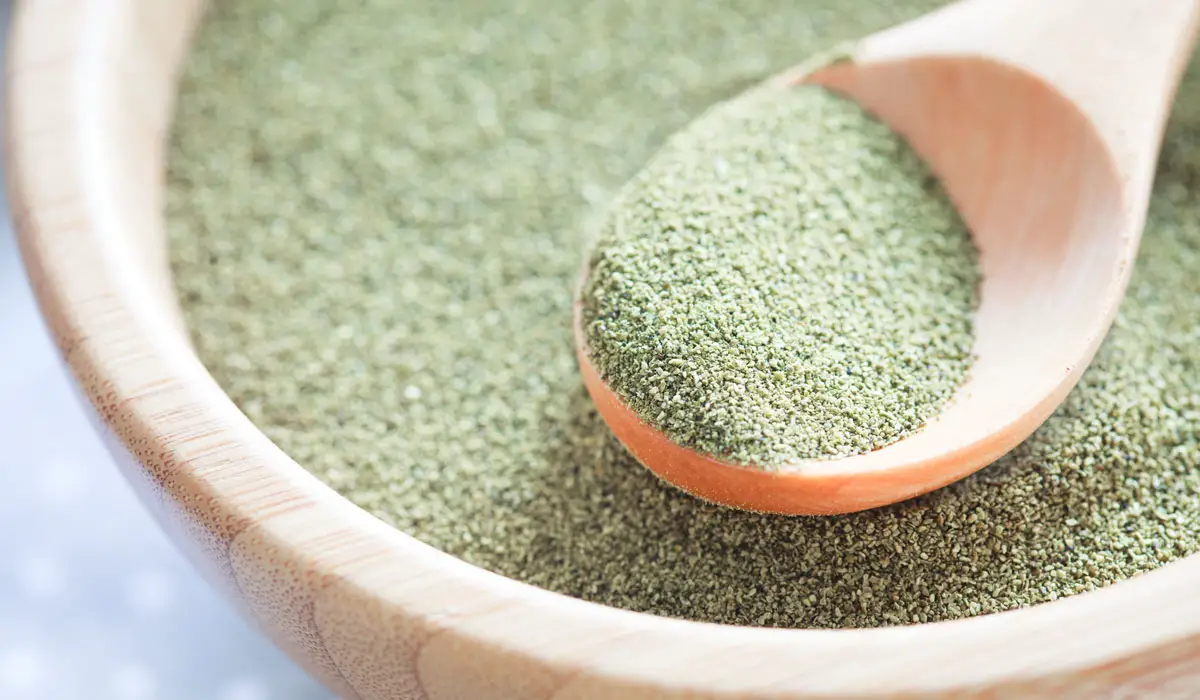What is Kelp Meal and Why You Should Add it to Your Soil

This post follows our research editorial guidelines.

Well-nourished soil is fertile soil, and I’m always looking for good, organic ways to enrich my garden. Kelp is one of the many low nitrogen fertilizers I incorperate on a yearly basis. Kelp meal is one of a host of naturally derived products that brings a real boost to the overall productivity of my garden. It’s often sold with big promises of lush foliage and abundant fruit or flowers, but just how much of that hype is true?
Kelp meal is a naturally derive soil amendment. It is rich in micronutrients and plant hormones that help support vigorous growth in the garden. It’s best applied as a tea, but yearly application of the meal directly to the soil is also beneficial.

Table of Contents
Is kelp meal the same as seaweed?
Surprisingly, kelp is not a type of seaweed. It’s actually a type of brown algae, a robust and fast growing group of plants. Kelp grows world wide, clinging to rocky shores with roots that can withstand even the most vigorous ocean swells.
Kelp has been used to improve the soil by coastal growers for generations. Traditionally harvested for use from the foreshores, these days there’s a lot of interest in farming kelp. Its ability to grow in a variety of settings, without soil, and its fast rate of growth make it an increasingly sustainable option for those wanting to bring the bounty of the sea to their garden.
“Plants grown in soils treated with seaweed manures, or extracts applied either to the soil or foliage, exhibit a wide range of responses that have been well documented in a number of reviews. Positive responses include improved germination, root development, leaf quality, general plant vigor and resistance to pathogens. Benefits in flower set, fruit production and marketable qualities of fruit are recorded for a large number of both herbaceous and woody crop species.”
James Craigie, National Research Council, Canada
What is the NPK of kelp meal?
Depending on the blend, kelp meal has an NPK of around 1.5–0.5–2.5. Its nutritional profile looks low, but there’s more to the story than that.
Your garden needs more than just three nutrients to become lush and verdant. Micronutrients like magnesium, calcium and iron are just as important. If you are growing flowers or fruit, a single missing micronutrient can result in deformed fruit or a total absence of blossoms. Even if you are diligent in applying regular fertilizer, if it doesn’t contain those micronutrients you’ll soon see problems.
Plant Hormones in Kelp meal
Kelp meal has been found to contain many naturally occuring hormones that function the same as those found in your average garden plant. Enhanced root growth, drought hardiness and improved stem and leaf size have all been reported in plants treated with kelp meal, as well as helping them mount a stronger defense against pests and disease.
3 Benefits of Using Kelp Meal

Provides Micro-nutrients
Kelp may not be rich in the big three minerals plants crave, but its an excellent source of almost all micronutrients that plants need to thrive. This include zinc, manganese, copper, iron, boron, molybdenum and chlorine, as well as the calcium and sulfur needed to produce strong flowers and fruit. Those trace elements are often lacking from synthetic fertilizers, so its great to have a natural option that makes up the shortfall.
Promotes Growth
Studies have repeatedly shown that kelp, especially when used as a foliar spray, promotes strong growth in plants. Some of this is down to the addition of vital micronutrients, as it’s most prominent in plants lacking good nutrition. Growth hormones in the kelp meal assist in the uptake on the micronutrients by promoting strong roots, and other hormones stimulate leaves, shoots and fruit growth. Between them, the micronutrients and plant hormones in kelp meal can deliver a real boost to your plants.
Safe to Use
Kelp meal represents an excellent solution to getting micronutrients to needy plants without risking an overload of nitrogen. Too much nitrogen can result in chemical burns, ranging from scorched leaves to damaged roots. It’s a ready option for heavy feeders and plants with delicate roots.
Kelp extracts don’t build up in the soil either, and they degrade readily so you don’t have to worry about them hanging around past their point of usefulness. It’s also safe to use around pets and children. Most brands of kelp meal contain no hazardous chemicals in it at all. It’s safe to use in areas of your garden where your smallest family members love to play, even if you’ve been using it as a foliar spray.
How much kelp meal to add per square foot of soil

Kelp meal is best diluted to around a pound or two 100 square feet of garden bed. Add kelp meal early in the spring to support the new season’s growth. Heavy feeders like tomatoes may well do best with a second application if you’re in an area with a long growing season.
That said, you can get best bang for your buck by applying the kelp meal as a foliar spray. This delivers micronutrients and hormones directly to the leaf, right where it’s needed, without worrying about it being lost to the soil. It also stops competing plants, like weeds or grass, sucking up all the goodness if you’re trying to plump up a fruit tree or encourage flowers from a particularly prized bush.
Foliar fertilization simply involves spraying a kelp meal tea over the plant, where it’s absorbed directly into the leaf. If you’re only looking to fertilize a small range of plants in containers a spray bottle will get the job done, and larger plant sprayers are cheap and effective, able to drench huge amounts of the garden quite effectively.
How to make Kelp meal tea
You will need:
- ¼ cup of kelp meal
- One gallon of warm, clean water
- Sieve or loose-weave cloth
- Funnel
- Clean gallon bottle, jug or bucket.
1. Soak Kelp
Start by adding ¼ cup of kelp meal to a gallon of lukewarm water. Stir well to ensure the kelp is thoroughly drenched.
2. Stir regularly
Allow the kelp to steep for two to three days in a warm, dark location. Stir regularly.
3. Strain out the liquid
Once steeped, filter the tea to remove the spent kelp. It will settle to the bottom of the container, so carefully pour off the top layer into your bottle or jug and use the sieve to remove the rest.
4. Apply Fertilizer
You can now use your tea to condition your soil. Once a year is enough for most plants. If using as a foliar spray, apply in the morning to prevent wet leaves becoming scorched in the sun.
How Long Does Kelp Meal Tea Last?
It’s generally best to use kelp meal tea as soon as you make it. While the minerals in the tea will remain useful indefinitely, the hormones will start to degrade as soon as the seaweed is properly rehydrated. Thankfully it’s not hard to make up a new batch whenever you need it.
Final thoughts
Seaweed has been long used to improve the soil in coastal communities, and it’s wonderful that kelp meal can provide those benefits to gardens inland too. It’s a delight to see the bounty of the ocean doing its work across all of my garden.
